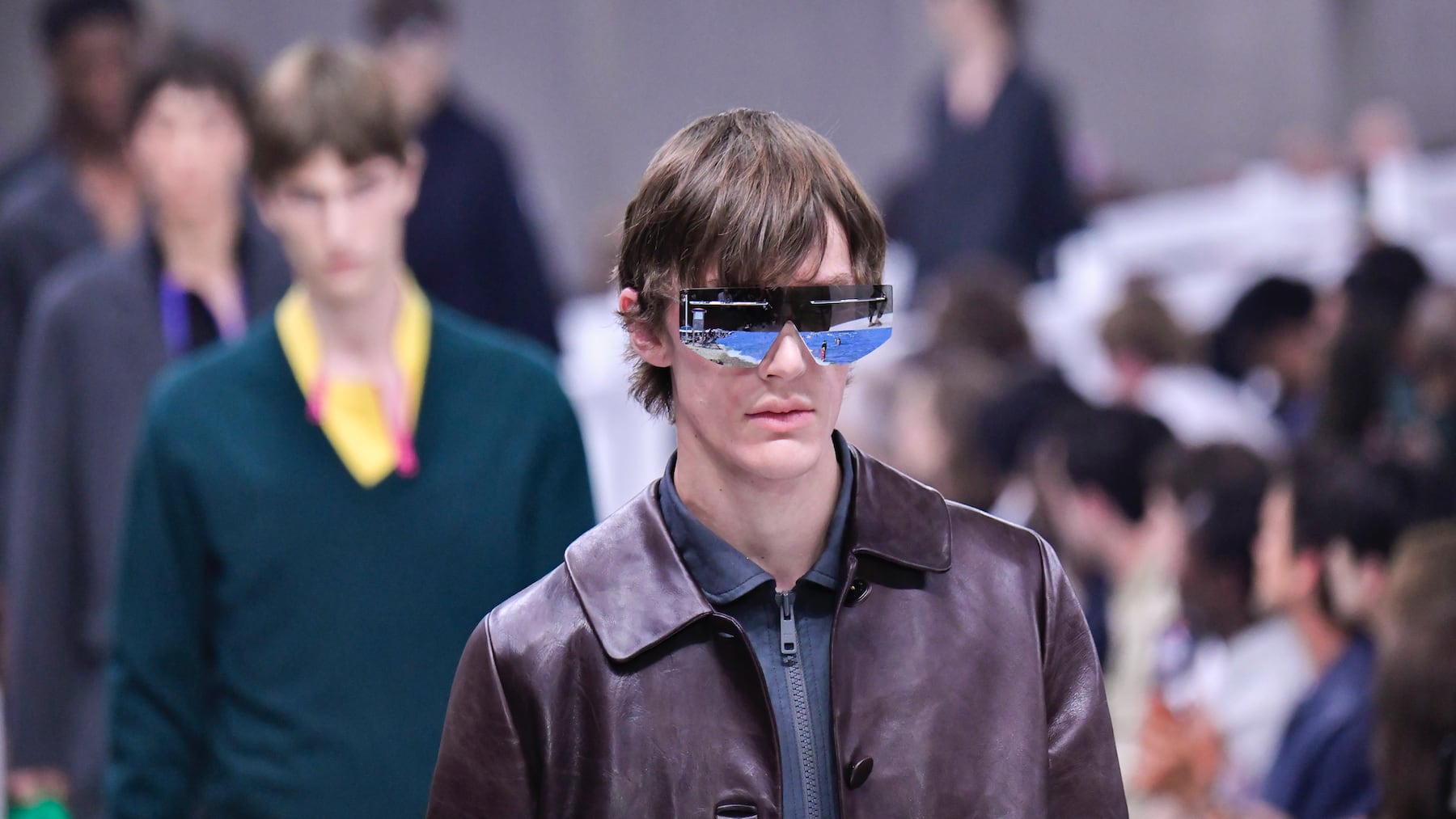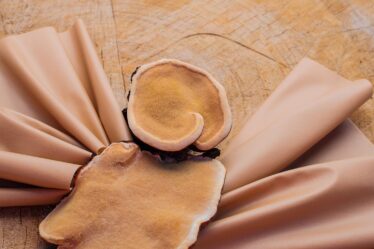
MILAN — Is fashion getting conservative, much like the general political climate? That’s certainly what it seems like: masculinity, at the Milan men’s shows that ended on Monday night, went largely back to the insouciant and proper, but oh so macho late-1950s charm à la Mr Ripley — the power of Netflix and television series in shaping fashion trends is undoubtable.
Is fashion also prompting a youthful reaction to all of the above, full of the liberating virtues of not giving a damn and doing as one pleases, much like what happens to teenagers before overthinking and giving too many damns kills it all? That’s what it seems like, too.
On the one side, there was Zegna’s magnificently abstract take on the estate Italiana feel, translated into a truly ageless, malleable linen wardrobe of easy pieces for effortless living. Close but not too close, there was also Dolce & Gabbana’s streamlined, perfectly executed ode to summer dressing for upscale Italian tourist locations, complete with straw woven into cardigan jackets — trend alert: vaguely Chanel-like jackets for men are all the rage — paired with notchless shirts, soft yet sharp tailoring and coral beading, with a side of sleek hair.
On the other side, there was Prada’s studiously messy take on youthful optimism, “the opposite of grand” as Mrs Prada conceded backstage, with trompe l’œil details inviting second guessing and closer inspection — fake belts, fake collars, printed cottons looking like heavy wools — and outfits put together almost at random, as plucked from grandma’s, grandpa’s and one’s own closets, oblivious to sizing. “Less theory, more practice,” added Mrs Prada as an explanation, followed by Raf Simons: “There is not much overthinking in this collection.” So much so, in fact, that when pressed to explain the reason for a Bernard Buffet print on a T-shirt, the response was: “Just because we like it” — a spontaneity that’s not immediately Prada, a brand where everything has a place for a brainy reason. This made for an upbeat outing that had elan, but that also leaned quite clearly towards a more Miu Miu kind of customer. It would be very interesting to see Prada explore a wider spectrum of masculinity, much like Mrs Prada and Simons do in womenswear. At the moment, the man is just the son of the woman.
Carrying on with the dichotomy between conservatism and youthful messiness, which made for welcome variety to the usually staid Milan scene, there were two imports from London. On one side, there was the deliciously anachronistic British formality of Dunhill, where Simon Holloway, in his first Milanese outing, opted for a garden party setting and a sense of elegance so expressive of old-school codes of class privilege, it looked almost radical in being so unremitting, not an ounce of irony in sight — but hey, the execution was top notch and the man knows how to cut a masterful suit and an even more masterful tailcoat, and clearly has a clientele for this. And on the other, the quest for new forms of beauty carried by Martine Rose, who was showing in Milan for the first time but whose efforts seemed to have gone primarily into the fantastic prosthetic noses and long wigs, because the clothes didn’t measure up.
The camp, soft BDSM theme over at DSquared2 felt oddly conservative, too: a reminder of a genre of gay imagery long gone stale. The liberating power of chance, or chaos, has always been on the agenda of Luca Magliano, whose verve is both rough and poetic as he keeps imagining a damaged, patched, mended wardrobe that oozes a kind thorny, deeply political yet dreamy elegance which he brings to life on a varied cast of beautiful losers. This new outing showed little progress, but was soulful and consistent. Meanwhile, Ludovico Bruno, a bright new name with his Mordecai line of spiritualised activewear, managed to balance a sartorial approach with a sense of freedom, keeping things tight and graphic.
At Setchu, chaos and method collided as Satoshi Kuwata’s trademark purism got stained, so to speak, with sensuality and even sexiness, thanks to slashes and openings that let skin peek through. And Jordanluca, a label worth keeping an eye on well beyond the piss-stained jeans that recently went viral, ballet dancers and punks met and collided in a spiky fantasy of oversized parkas, cycling shorts, angular tailoring and elongated dancer shoes that was both precious and rough.
At Moschino, Adrian Appiolaza’s first men’s outing came with the fluidity and volumes he championed when he was a designer director at Loewe, which made for a fresh take on the twisted classicism of the house. Still, one can feel Appiolaza somehow slowed down by the burden of Moschino’s codes, in particular the sartorial gags. He clearly needs more time, and probably more daring, but he can do it. A lighter approach to styling would help, too.
Softness and easy breezy tailoring are the Armani DNA. And yet, it is captivating to see how playful and welcoming Mr Armani’s approach can become at Emporio Armani, which over the past few season has been getting bold and bolder, and how elegant and pared back, but also age-inclusive, it can become at Giorgio Armani. Over at MSGM, Massimo Giorgetti produced a mixed bag of a co-ed collection that felt convincing only when he reverted back to the playful elementary spirit that was the foundation of the brand fifteen years ago when he started.
Fendi is fast approaching its 100th birthday, which the house will celebrate in 2025. For this reason, Silvia Venturini was feeling very Fendi, but not in an obvious way. The house’s menswear offering was launched in the early 1990s, so it’s only 30 years old and, this season, Venturini Fendi opted for a lightweight preppy mood that probably leaned too much on the youthful side, but was as easy and refreshing as a breeze, and very Roman for that.
Speaking of brand identity, the last day of fashion week opened, with wicked timing, with the release of a surprise Valentino collection, the first designed and styled by Alessandro Michele, hours before Sabato De Sarno’s second Gucci men’s show. Rickdick on Instagram put the matter in perspective with a meme that put “Gucci Ancora” over a Valentino image, and “Valentino di nuovo” (again, in Italian) over a Gucci image. While Alessandro Michele’s outing was solely seen in pictures, making the atelier work difficult to truly appreciate, Sabato De Sarno’s effort was a show: not particularly bursting with ideas, but honest and well executed. De Sarno is a designer: he likes to build things, and it shows. His clothes owe a lot to both Valentino and to Prada, places where he previously worked, but they are faultlessly made and deserve a chance. For sure, there is intention behind them.
The most energetic show of the week was JW Anderson: an interaction of abstract, overblown volumes, odd humour and slightly militaristic dressing that felt consistent with Jonathan Anderson’s vision, if even more abstract than usual. This was fashion that felt youthful but not juvenile, approachable but not banal, and ultimately personal and not derivative.



